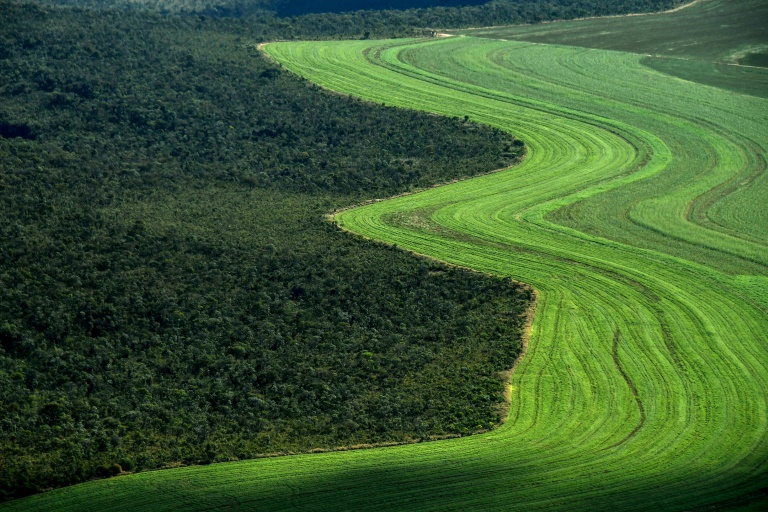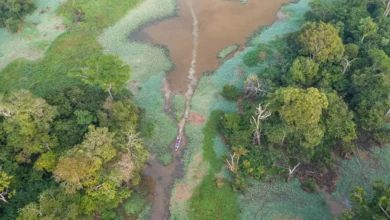Bordering the Gaza Strip, Al-Ahrash Natural Protectorate is located at Egypt's northeastern-most border. With an area of just six kilometers square, its one of Egypt's smaller protectorates, and, as it was established in 1985, one of the first such areas to be given natural protectorate status.
In Arabic, Al-Ahrash means "the woodlands," but this protectorate is characterized more by its sand dunes and shrubbery. The northern side of this, simple yet scenic, protectorate overlooks the Mediterranean Sea and plots of farmland. It's southern and eastern sides overlook Rafah City in the Gaza Strip.
According to the database of the Egyptian Environmental Affairs Agency (EEAA), the executive arm of the Ministry of State for Environmental Affairs, Al-Ahrash is classified as a desert protectorate. It contains large sand dunes, some of which rise to 60 feet in height, which are held in place by scattered trees–including Acacias, Camphors,Tamarisks, and Cypresses–as well as grass and shrubs.
Al-Ahrash also houses a number of different wildlife species. Smaller birds, including sparrows, warblers, crows, pigeons and doves, are common. Quail migrate to this area during autumn, and birds of prey, including hawks, kites, and–to a lesser extent–eagles, can be spotted during spring. A variety of lizards and other reptile species are common, while small desert mammals exist in lesser numbers.
The protectorate's distance from Cairo–over 360 kilometers–and other large Egyptian cities may explain its relatively well-protected condition. Al-Ahrash, however, is not impervious to all ecological threats. Plastic bags, tin cans and other waste are strewn across portions of the protectorate. Vehicle tracks are also common despite a ban on driving within the protectorate's borders.
Experts say unregulated tourism, agriculture, and animal grazing also negatively impact Al-Ahrash. Al-Masry Al-Youm spoke with an official in charge of the protectorate's oversight regarding the problem of garbage and waste, along with the other threats confronting Al-Ahrash.
"We are understaffed in terms of guards, rangers, environmentalists and other employees," the official, who requested anonymity because he is not authorized to speak to the media. "Our chief problem here is that of proper waste disposal."
The waste strewn across parts of the protectorate "is attributable to the fact that we have no proper garbage-dump site in Egyptian Rafah," the official added. "As a result a significant amount of waste is constantly being blown, and carried by the winds, onto this protectorate."
"Many visitors, on picnics or excursions, leave waste and garbage behind," he continued. "A lack of environmental awareness is another one of our chief problems."
The official, however, failed to mention the virtual absence of garbage cans on the protectorate's grounds. Moreover, due to a lack of staff and funds, clean-up operations in Al-Ahrash are conducted only once a year.
Regarding the tracks of motor vehicles throughout the protectorate, the official said, "it is prohibited to drive cars or other vehicles here. Yet some people come here on their motorcycles and drive through the protectorate and over its dunes. We are understaffed, and so we are not always able to prevent these people entering on their motorcycles."
"The farmlands to the north of the protectorate may use chemical fertilizers, herbicides and pesticides, but they have not noticeably affected the protectorate in any way," the official said, in reference to the other threats posed by agriculture, urbanization, and livestock grazing, while admitting the cultivation of crops taps into the groundwater supply on which Al-Ahrash depends for its existence.
"Farmlands to the north and west of the protectorate do occasionally drain and deplete our natural water supply," he said. "But this is replenished during the rainy season."
The official posited Al-Ahrash was a "self-sustaining" protectorate. He dismissed urbanization as a serious threat. Livestock grazing, "while it is detrimental, is not common on the grounds of the protectorate."
This article is part of Al Masry Al Youm’s weekly “Protectorates not Protected” series. The aim is to investigate the degree to which Egyptian Protectorates are, in fact, environmentally ‘protected’.




